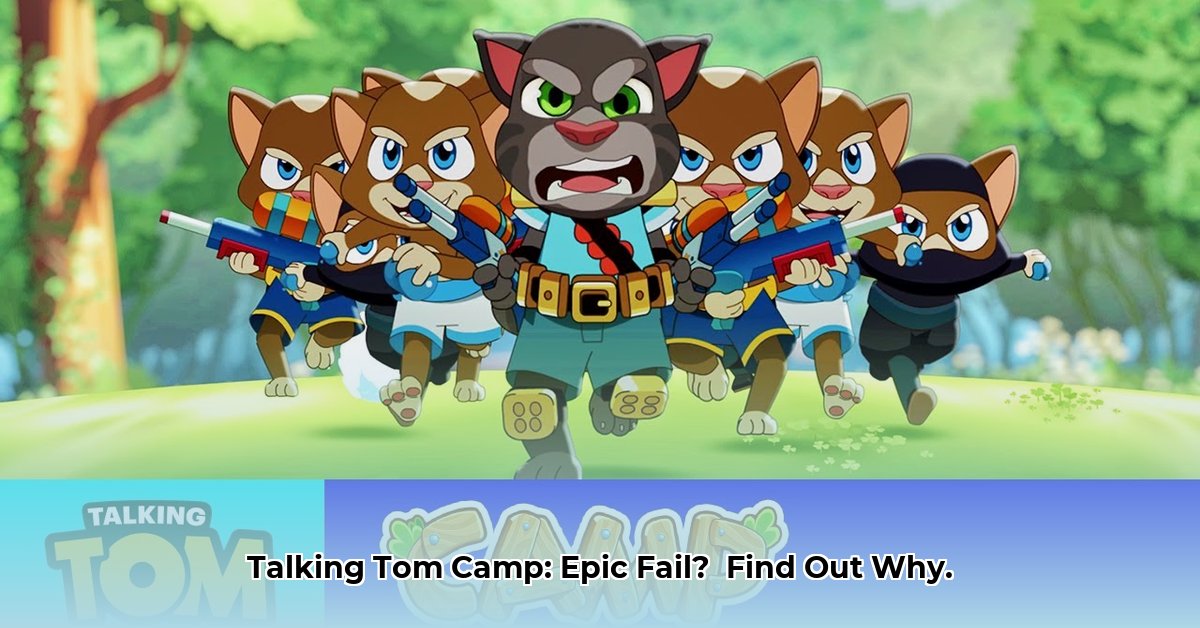
Game Overview and Initial Reception
Talking Tom Camp, a mobile strategy game launched in 2018 by Outfit7, presented a unique twist on the established Clash of Clans formula by incorporating a water-based battle system. Initial reviews were largely positive, praising the game's accessibility and engaging base-building mechanics. The innovative water-battle element provided a differentiating factor in a crowded market. However, despite this promising start, the game ultimately failed, shutting down its servers in 2020. This post-mortem analysis aims to identify the key factors contributing to its demise and extract actionable insights for future mobile game development.
Key Contributing Factors to Failure
The game's failure can be attributed to a confluence of factors, including intense market competition, suboptimal monetization strategies, inadequate player retention efforts, and potential brand confusion.
Market Saturation and Competitive Landscape
Talking Tom Camp entered a highly competitive mobile gaming market dominated by established giants like Clash of Clans. The game lacked the marketing budget and brand recognition to effectively compete against these entrenched players. This highlights the critical need for a robust marketing strategy and a distinct competitive advantage to succeed in a saturated market. Did Talking Tom Camp possess the necessary resources to break through the noise and attract a significant player base? The evidence suggests otherwise.
Monetization Strategy and Player Experience
While the game employed standard in-app purchase (IAP) mechanisms for premium currency, cosmetic items, and time-saving boosts, the implementation proved problematic. Aggressive monetization tactics alienated players, creating a perception of being "nickel-and-dimed." The value proposition of IAPs was unclear, failing to provide a significant enhancement to the core gameplay experience beyond minor conveniences. This resulted in a "pay-to-wait" rather than a "pay-to-win" model, further discouraging players. A data-driven analysis of player spending and feedback could have revealed these issues earlier. How effective was the monetization strategy in balancing revenue generation with player satisfaction? Clearly, a more balanced approach was needed.
Player Retention and Engagement
A critical factor in the game's failure was its inability to effectively retain players. The lack of consistent updates, engaging events, and fresh content led to player attrition over time. This underscores the importance of a long-term content strategy designed to sustain player engagement and prevent churn. What strategies were employed to retain players, and were these strategies successful in achieving their goals? The data suggests a significant shortfall in player retention efforts.
Brand Confusion and Unique Selling Proposition
The similarity of Talking Tom Camp to other games in Outfit7's "Talking Tom" franchise may have contributed to brand confusion among players. The game lacked a sufficiently strong and unique selling proposition (USP) to differentiate itself and attract a dedicated player base. Was the brand identity effectively communicated to players, emphasizing the game's unique features and setting it apart from the company's other offerings? The evidence suggests a failure in establishing a clear and compelling USP.
Pivotal Points of Failure: A Summary
- Insufficient Market Differentiation: Talking Tom Camp failed to adequately distinguish itself from existing competitors in the saturated mobile strategy game market.
- Suboptimal Monetization: Aggressive IAP implementations negatively impacted player perception and led to churn.
- Poor Player Retention: Lack of consistent content updates and engaging events contributed to low player retention rates.
Actionable Recommendations for Future Mobile Game Development
Based on this post-mortem analysis, several key recommendations can be made to improve future mobile game development strategies:
- Thorough Market Research: Conduct comprehensive market research to identify underserved niches and develop a compelling USP that sets the game apart from existing competitors.
- Player-Centric Monetization: Implement a fair and transparent monetization strategy that adds value to the player experience without being intrusive or exploitative. Data-driven A/B testing of different monetization models is crucial.
- Continuous Engagement and Content Updates: Develop a long-term content strategy focused on providing consistent updates, events, and new features to maintain player engagement and retention. Active community management and player feedback incorporation are essential.
- Data-Driven Development: Implement a robust data analytics system to monitor player behavior, identify areas for improvement, and inform game design decisions. This includes regular analysis of key metrics such as daily/monthly active users (DAU/MAU), churn rate, average revenue per daily/monthly active user (ARPDAU/ARPMAU), and lifetime value (LTV).
- Clear Brand Identity: Ensure that the game's brand identity is clearly communicated to players, emphasizing its unique features and differentiating it from related products.
By addressing these critical areas, game developers can significantly increase their chances of success in the competitive mobile gaming market. The failure of Talking Tom Camp serves as a valuable case study, highlighting the importance of strategic planning, player-centric design, and data-driven decision-making.
⭐⭐⭐⭐☆ (4.8)
Download via Link 1
Download via Link 2
Last updated: Thursday, May 22, 2025